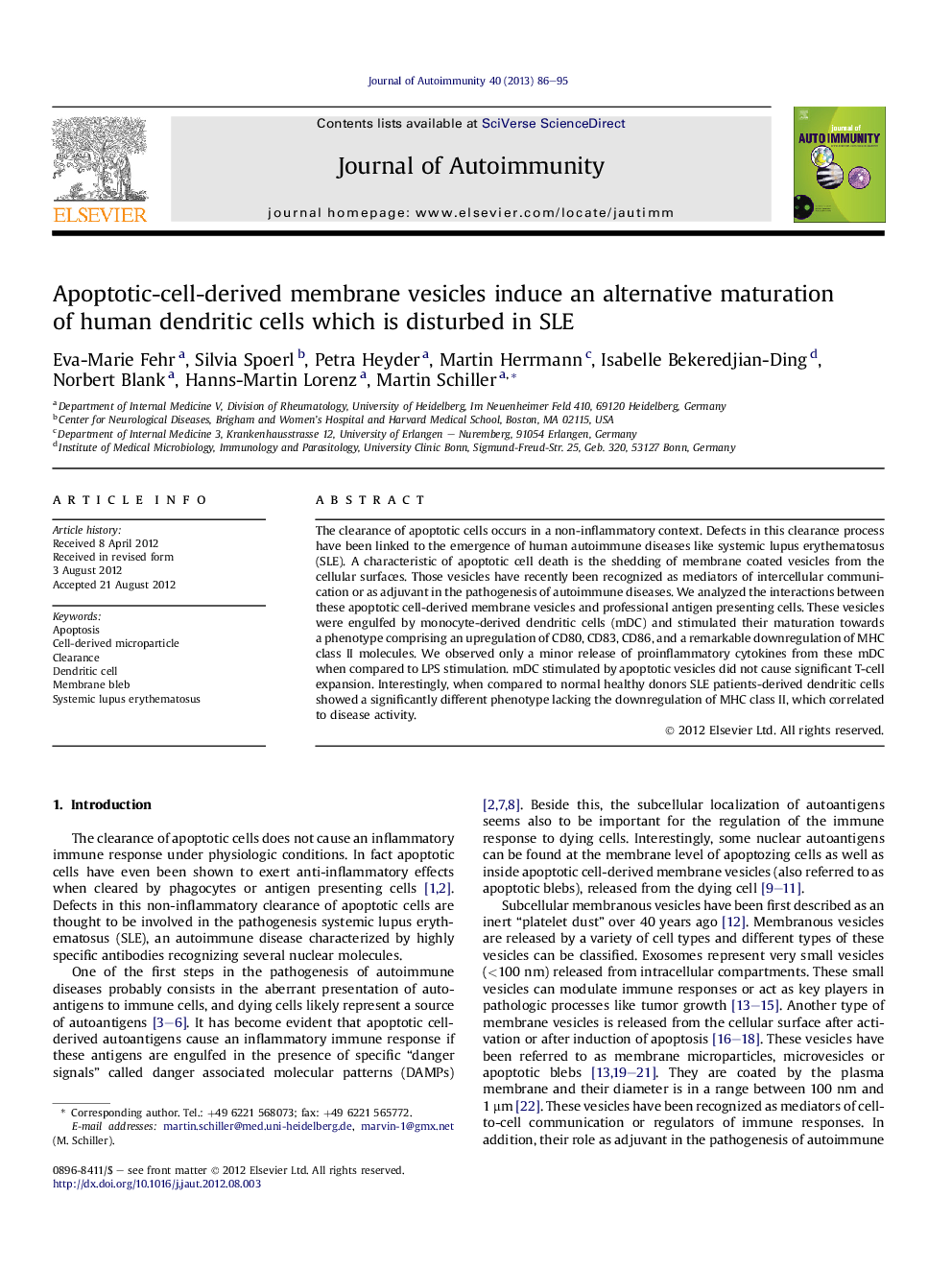| Article ID | Journal | Published Year | Pages | File Type |
|---|---|---|---|---|
| 3367866 | Journal of Autoimmunity | 2013 | 10 Pages |
The clearance of apoptotic cells occurs in a non-inflammatory context. Defects in this clearance process have been linked to the emergence of human autoimmune diseases like systemic lupus erythematosus (SLE). A characteristic of apoptotic cell death is the shedding of membrane coated vesicles from the cellular surfaces. Those vesicles have recently been recognized as mediators of intercellular communication or as adjuvant in the pathogenesis of autoimmune diseases. We analyzed the interactions between these apoptotic cell-derived membrane vesicles and professional antigen presenting cells. These vesicles were engulfed by monocyte-derived dendritic cells (mDC) and stimulated their maturation towards a phenotype comprising an upregulation of CD80, CD83, CD86, and a remarkable downregulation of MHC class II molecules. We observed only a minor release of proinflammatory cytokines from these mDC when compared to LPS stimulation. mDC stimulated by apoptotic vesicles did not cause significant T-cell expansion. Interestingly, when compared to normal healthy donors SLE patients-derived dendritic cells showed a significantly different phenotype lacking the downregulation of MHC class II, which correlated to disease activity.
► Apoptotic-cell-derived membrane vesicles (blebs) stimulate human dendritic cells. ► Bleb-stimulated DC upregulate costimulatory molecules. ► Bleb-stimulated DC shows a decreased MHC-II expression. ► The decrease in MHC II surface expression is impaired in SLE. ► MHC II expression on bleb-stimulated DC correlates to SLE disease activity
